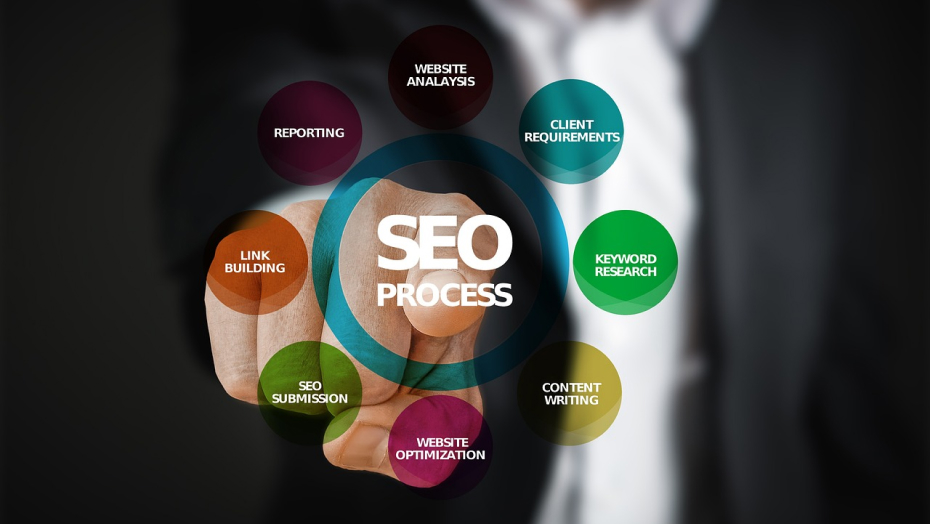In the world of digital marketing, crafting a landing page that is both effective and SEO-friendly is crucial for driving organic traffic and converting visitors into customers. By exploring the art of optimizing landing pages with our SEO services, we will uncover advanced strategies that not only elevate your page’s visibility on search engines but also enhance the user experience, ultimately leading to higher conversion rates.
Understanding the Importance of SEO for Landing Pages
Landing pages serve as the focal point of your marketing campaigns, designed to guide visitors towards a specific action. While some marketers argue that landing pages are solely for paid traffic, incorporating SEO into your landing page strategy can significantly boost your organic reach and sustain long-term growth. By optimizing your landing pages for search engines, you ensure that they are discoverable by potential customers who are actively seeking solutions similar to what you offer.
1. Comprehensive Keyword Research: The Foundation of SEO Success
Effective SEO begins with thorough keyword research. Identifying the right keywords is essential for ensuring that your landing page aligns with the search intent of your target audience. Start by brainstorming keywords that are closely related to the content and purpose of your landing page. Utilize tools like Google Keyword Planner, SEMrush, or Ahrefs to expand your list and analyze the search volume, competition, and relevance of each keyword.
Actionable Tips for Keyword Research
- Focus on Long-Tail Keywords: Long-tail keywords often have lower competition and higher conversion potential. These phrases are more specific and closely related to user intent, making it easier for you to rank and attract qualified traffic.
- Analyze Competitors: Look at the keywords competitors are ranking for. This can provide opportunities for keywords that you would have missed.
- Use Semantic Keywords: Incorporate related terms and phrases that search engines recognize as being semantically connected to your primary keywords. As a result, your page’s relevance and ranking may improve.
2. Crafting a Captivating Title: The Gateway to Engagement
Your landing page title is the first thing that both users and search engines see. A well-crafted title not only grabs attention but also sets the tone for the entire page. The title should be concise, relevant, and include your primary keyword.
Title Optimization Techniques
- Include Primary Keywords: Ensure that your primary keyword is naturally integrated into the title without compromising its readability.
- Create a Sense of Urgency: Use words that encourage immediate action, such as “now,” “today,” or “limited time.”
- Highlight Unique Selling Points: Showcase what makes your offer or content stand out from competitors.
3. Optimizing Headlines and Meta Descriptions: Boosting CTR and Relevance
Headlines and meta descriptions play a pivotal role in attracting clicks from search engine results pages (SERPs). A compelling headline paired with a well-written meta description can significantly increase your click-through rate (CTR).
Best Practices for Headlines and Meta Descriptions
- Use H1 Tags for Primary Headlines: Search engines prioritize content wrapped in H1 tags. Ensure that your primary headline is wrapped in an H1 tag and contains the main keyword.
- Write Engaging Meta Descriptions: Though meta descriptions do not directly impact rankings, they influence CTR. Use your main and additional keywords, and ensure the description succinctly summarizes the content while encouraging users to click.

Also read: How to Create Effective WordPress Meta Descriptions
4. Enhancing Visual Elements with SEO-Friendly Practices
Visual elements such as images, videos, and infographics enrich the user experience but require optimization to ensure they contribute positively to your SEO efforts. Since search engines cannot “see” images, it’s crucial to provide them with context.
Image Optimization Tips
- Use Descriptive File Names: Before uploading images, rename them using descriptive, keyword-rich file names.
- Implement Alt Text: Add alt text to your images that describes the content and includes the main keyword where appropriate. This enhances accessibility and aids in search engines comprehending the content of the images.
- Optimize Image Size: Compress images to reduce load times without sacrificing quality, which is crucial for maintaining user engagement and SEO.
5. Crafting SEO-Optimized URLs: Clarity and Relevance
Your landing page URL is an essential component of on-page SEO. A clear, concise URL structure that includes relevant keywords can enhance your page’s visibility and clickability.
Tips for Creating SEO-Friendly URLs
- Include Primary Keywords: Incorporate your primary keyword into the URL to signal relevance to search engines.
- Keep It Short and Simple: Avoid long, complex URLs that may appear spammy. Choose a URL that is simple to read and recall.
- Use Hyphens to Separate Words: This improves readability for both users and search engines.
6. Writing Persuasive, Keyword-Rich Copy
The content on your landing page should be user-focused, informative, and persuasive, all while being optimized for search engines. This involves strategically placing keywords throughout the copy without overstuffing.
Copywriting Strategies
Prioritize User Intent: Ensure that your content addresses the needs and queries of your audience. The more relevant and helpful your content, the better it will perform in search rankings.
- Distribute Keywords Naturally: Incorporate your primary and additional keywords naturally throughout the copy. Keyword stuffing may lead to search engine penalties, so make sure not to do it.
- Use Semantic Variants: Include variations of your keywords to capture a broader range of search queries.
7. Structuring Your Landing Page for Optimal SEO
A well-structured landing page not only improves user experience but also makes it easier for search engines to crawl and index your content. A hierarchical structure using headings (H1, H2, H3) is essential.
Structuring Tips
- Use Multiple Headings: Break your content into sections using H2 and H3 tags. This not only improves readability but also allows you to target additional keywords in subheadings.
- Create Logical Sections: Organize your content into clear, logical sections that guide the user through the page. Each section should be easy to navigate and provide value to the reader.

8. Maximizing Shareability: Leveraging Social Signals
Social media shares can amplify your landing page’s reach and contribute to its SEO performance. Encouraging visitors to share your content can lead to increased visibility and potential backlinks.
Encouraging Social Shares
- Add Visible Share Buttons: Place social sharing buttons in prominent locations on your landing page to make it easy for visitors to share your content.
- Craft Share-Worthy Content: Focus on creating content that is engaging, valuable, and resonates with your audience. This increases the likelihood that visitors will share it on their social networks.
9. Focusing on Specificity: Targeting Niche Keywords
Rather than targeting broad, highly competitive keywords, aim for specific, niche keywords that are more likely to attract targeted traffic. These keywords often have higher conversion rates because they match the user’s intent more closely.
Targeting Tips
- Long-Tail Keywords: As previously mentioned, long-tail keywords are more specific and often less competitive. These can drive highly qualified traffic to your landing page.
- Understand Search Intent: Align your content with the intent behind the search queries you’re targeting. This ensures that your landing page provides the answers or solutions that users are looking for.
10. Maintaining Consistency: Integrating Keywords Seamlessly
Consistency in keyword usage across various elements of your landing page is key to creating a cohesive and optimized user experience. This includes the title, headlines, URL, meta description, and throughout the copy.
Integration Strategies
- Avoid Over-Optimization: Ensure that your keyword integration feels natural and not forced. Over-optimization might result in bad user experience and penalties.
- Align Content with User Expectations: When visitors arrive on your landing page, the content should align with what they expected based on the search query and your SERP listing.
By following these comprehensive SEO best practices, you can create landing pages that not only attract organic traffic but also convert visitors into customers. A well-optimized landing page is a powerful tool in your digital marketing arsenal, capable of driving sustained growth and maximizing the return on your investment.
At InCreativeWeb, we specialize in crafting SEO-optimized landing pages that drive targeted organic traffic and boost conversions. Our expert team ensures your landing pages are keyword-rich, user-focused, and designed to rank higher on search engines, maximizing your online visibility and business growth. Get in touch with our professional SEO consultant for personalized strategies that boost your search rankings and drive measurable results.
Author
Jayesh Patel
Jayesh Patel is a Professional Web Developer & Designer and the Founder of InCreativeWeb.
As a highly Creative Web/Graphic/UI Designer - Front End / PHP / WordPress / Shopify Developer, with 14+ years of experience, he also provide complete solution from SEO to Digital Marketing. The passion he has for his work, his dedication, and ability to make quick, decisive decisions set him apart from the rest.
His first priority is to create a website with Complete SEO + Speed Up + WordPress Security Code of standards.